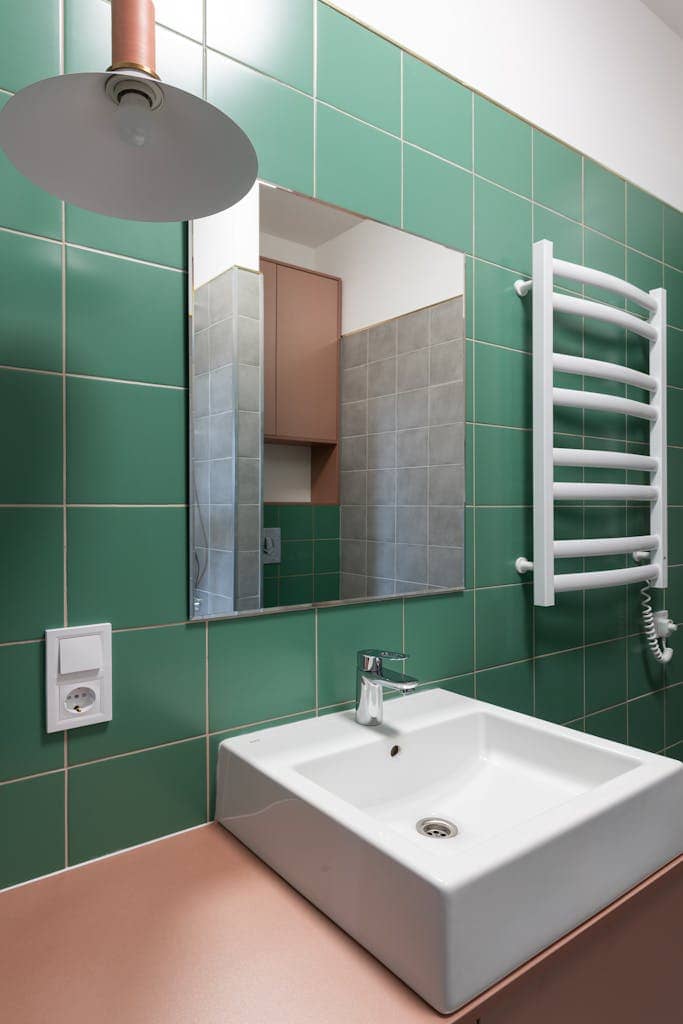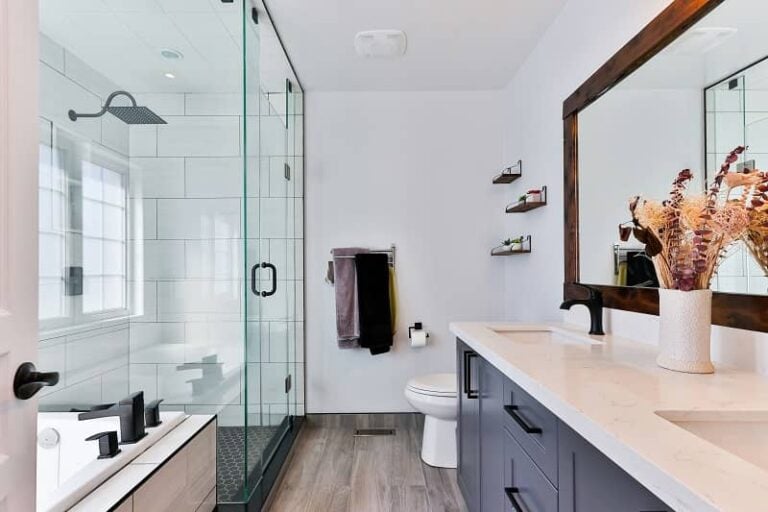How to Kill Pink Mold: Detailed Guide
You drop your loofah in the shower, getting up close and personal with the bottom of your shower curtain or grout lines in the tiles… only to discover pink slime growing.
Few household nuisances are as misunderstood and stubborn as the phenomenon commonly referred to as “pink mold.”
This guide seeks to demystify pink mold, from its appearance and causes to its eradication and prevention. We’ll explore the differences between pink mold and fungal molds, delve into its preference for our bathrooms’ warm, moist environments, and provide a detailed guide to removing and preventing its spread.

What Is Pink Mold?
Pink mold, often mistaken for a fungus, is a species of bacteria known as Serratia marcescens. Unlike black or green molds, which are fungi, pink mold is a bacterial species that thrives in damp environments. It’s distinguished by its color and preference for bathroom areas, such as showers and sinks, where soap and shampoo residue provide nutrients.
What Pink Mold Looks Like
True fungal molds are typically present in black, green, or white colors and have a fuzzy appearance. In contrast, pink mold is characterized by a very slimy texture and a distinctive color that ranges from light orange to deep pink. It commonly forms in grout lines, shower corners, and around drains. Unlike some molds that grow in outward colonies, pink mold spreads across surfaces in a thin layer, making it somewhat easier to remove but also easier to overlook.
What Causes Pink Mold?
The growth of pink mold is attributed to persistent moisture, organic material, and warm temperatures. Bathrooms, especially showers, provide the perfect environment due to the presence of soap scum, body oils, and the regular use of warm water. Ventilation and inadequate cleaning routines can exacerbate the problem.
How to Get Rid of Pink Mold in the Shower
Eliminating pink mold requires a thorough cleaning process. Before you start, gather your materials: protective gloves, a mask, a spray bottle, bleach (or vinegar/hydrogen peroxide for sensitive surfaces), water, a stiff-bristled brush, and a clean, dry towel or cloth.
Step 1: Preparation and Safety
- Ensure the room is well-ventilated to avoid inhalation of fumes or spores. Open windows or use an exhaust fan.
- Wear protective gloves and a mask to avoid direct contact with the cleaning agents and the bacteria.
Step 2: Mixing the Cleaning Solution
- Mix one part bleach with four parts water in a spray bottle for hard, non-porous surfaces. If the surface is porous or you prefer a milder solution, substitute bleach with distilled white vinegar or hydrogen peroxide.
- Shake the bottle gently to mix the solution.
Step 3: Initial Cleaning
- Pre-wet the affected areas with plain water to prevent the cleaning solution from being absorbed too quickly.
- Spray the cleaning solution generously over the pink mold, ensuring it’s fully covered. Let it sit for at least 10 minutes. This dwell time is crucial for the solution to penetrate and kill the bacteria.
Step 4: Scrubbing
- After allowing the solution to sit, scrub the area with a stiff-bristled brush. For grout lines or smaller crevices, consider using an old toothbrush or a grout brush to reach these areas effectively.
- Apply additional cleaning solution as needed to keep the area moist while scrubbing.
Step 5: Rinsing
- Rinse the area thoroughly with hot water to remove all traces of the cleaning solution and the dislodged pink mold. For showers, using a handheld showerhead can be effective in rinsing off walls and tight spaces.
Step 6: Drying and Final Touches
- Dry the cleaned area entirely with a clean towel or cloth. Removing moisture is critical to preventing the immediate return of pink mold.
- For added prevention, consider wiping the area with a cloth dampened with a small amount of vinegar. This step can inhibit bacterial growth without leaving harmful residues.
Step 7: Disposal and Cleanup
- Safely dispose of or thoroughly wash the cleaning materials used, especially if they are disposable. This helps prevent the spread of the bacteria to other areas of your home.
- Wash hands with soap and water after removing gloves to remove any bacteria contracted during cleaning.
Note: For stubborn cases or recurring pink mold issues, you may need to repeat this process or consider more potent cleaning agents. However, always ensure the cleaning agent is safe for use on the affected surfaces to avoid damage.
How to Prevent Pink Mold in Shower
tl;dr
– Improve ventilation by using an exhaust fan during and after showers.
– Regularly clean the shower with mold-inhibiting solutions.
– Dry shower surfaces after use to reduce moisture.
– Seal grout lines annually to prevent water penetration.
– Avoid leaving wet items in the shower, such as towels and loofahs.
Frequent shower and bathroom cleaning plays a crucial role in pink mold prevention. Regular use of appropriate cleaners helps remove the organic materials on which the bacteria thrive, such as soap scum and body oils. A consistent cleaning routine ensures that these nutrients are unavailable to feed the bacteria, significantly reducing the likelihood of pink mold development.
Another important measure is to keep the surfaces in the shower and bathroom as dry as possible. Moisture is the lifeblood of pink mold, and eliminating excess water hinders the bacteria’s ability to grow. After using the shower, squeezing or towel-drying the walls and floor can make a substantial difference. This simple act removes the water that could otherwise evaporate slowly, maintaining high humidity levels favorable for bacterial growth.
Improving ventilation within the bathroom is another effective strategy for preventing pink mold. You can significantly reduce humidity levels by using exhaust fans or opening windows. This not only aids in drying out the shower area more quickly but also improves the overall air quality in the bathroom, making it less hospitable for bacteria and mold alike.
Lastly, reconsidering the type of soap used in the shower can also impact pink mold growth. Liquid soaps are preferable to bar soaps because they leave less residue. Bar soaps often leave a film on shower surfaces that can serve as a food source for bacteria. By switching to liquid soaps, you can minimize the residue and, consequently, the potential for pink mold formation.
Q: Is pink mold dangerous?
A: While not as harmful as black mold, pink mold can cause respiratory and urinary tract infections in susceptible individuals and a few rare cases of serious infections. Regular cleaning and prevention are crucial to avoiding health issues.
Q: Can pink mold come back after treatment?
A: Yes, without ongoing prevention measures, pink mold can return. Maintaining a dry, clean environment is crucial.
Q: Are natural cleaners effective against pink mold?
A: Yes, solutions like vinegar can inhibit bacterial growth but may require more frequent application than bleach-based cleaners.
Q: Can pink mold grow on surfaces other than showers?
A: Yes, pink mold can grow on any surface that is frequently wet and has access to organic material, including sinks, toilets, and kitchen areas.
Q: How often should I clean my shower to prevent pink mold?
A: It is recommended to clean your shower at least once a week and dry the surfaces after each use to prevent pink mold growth.






